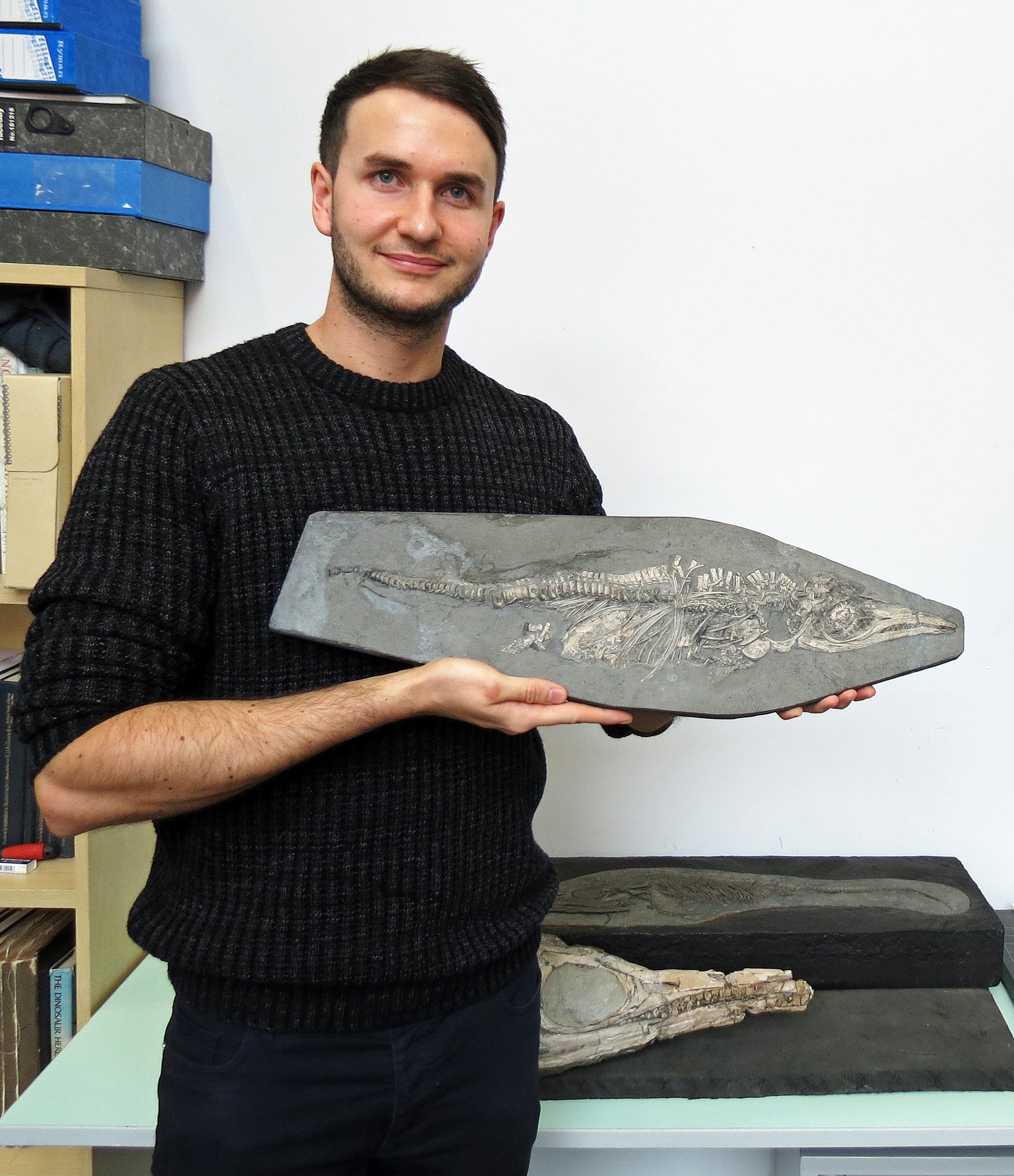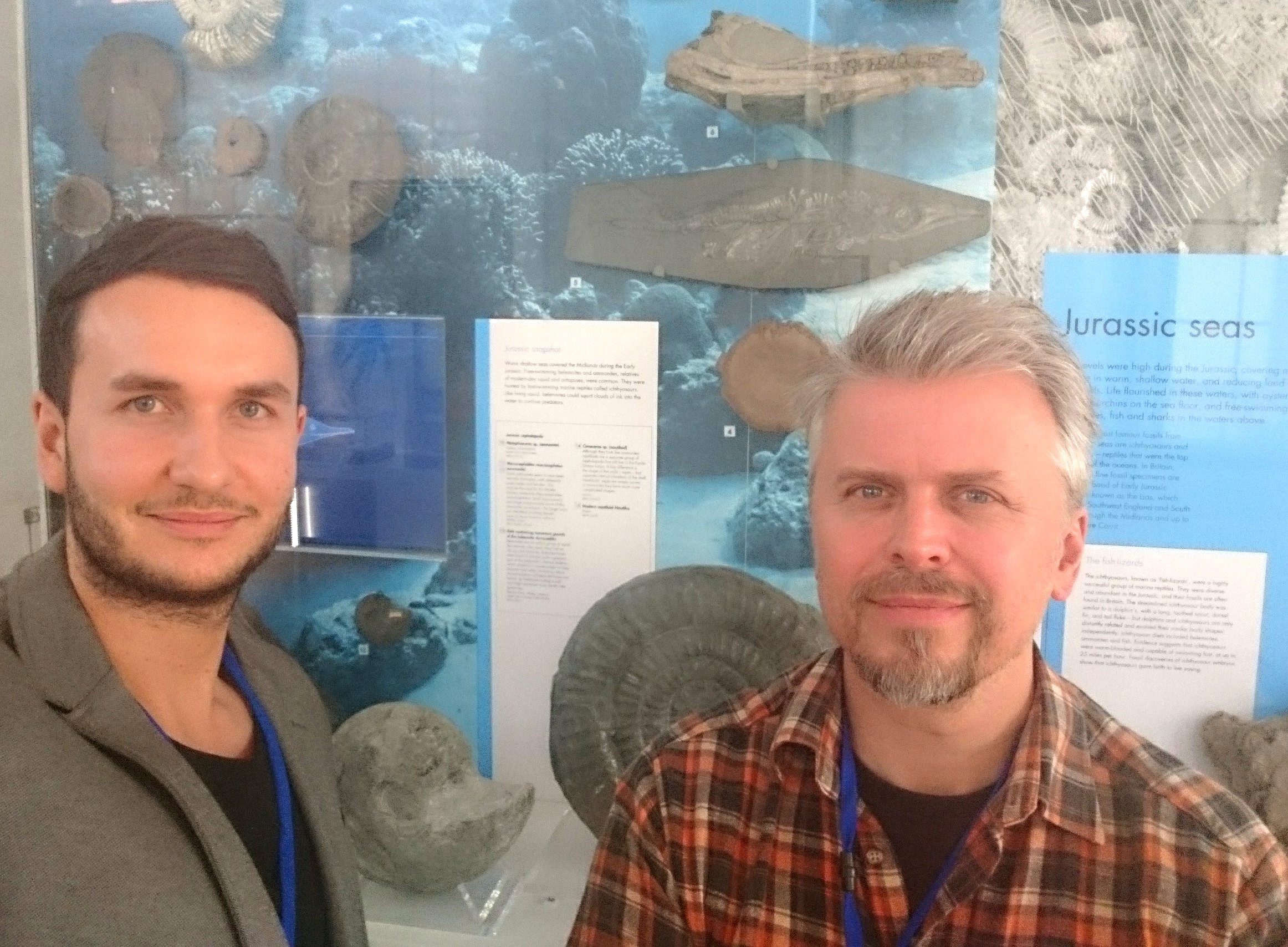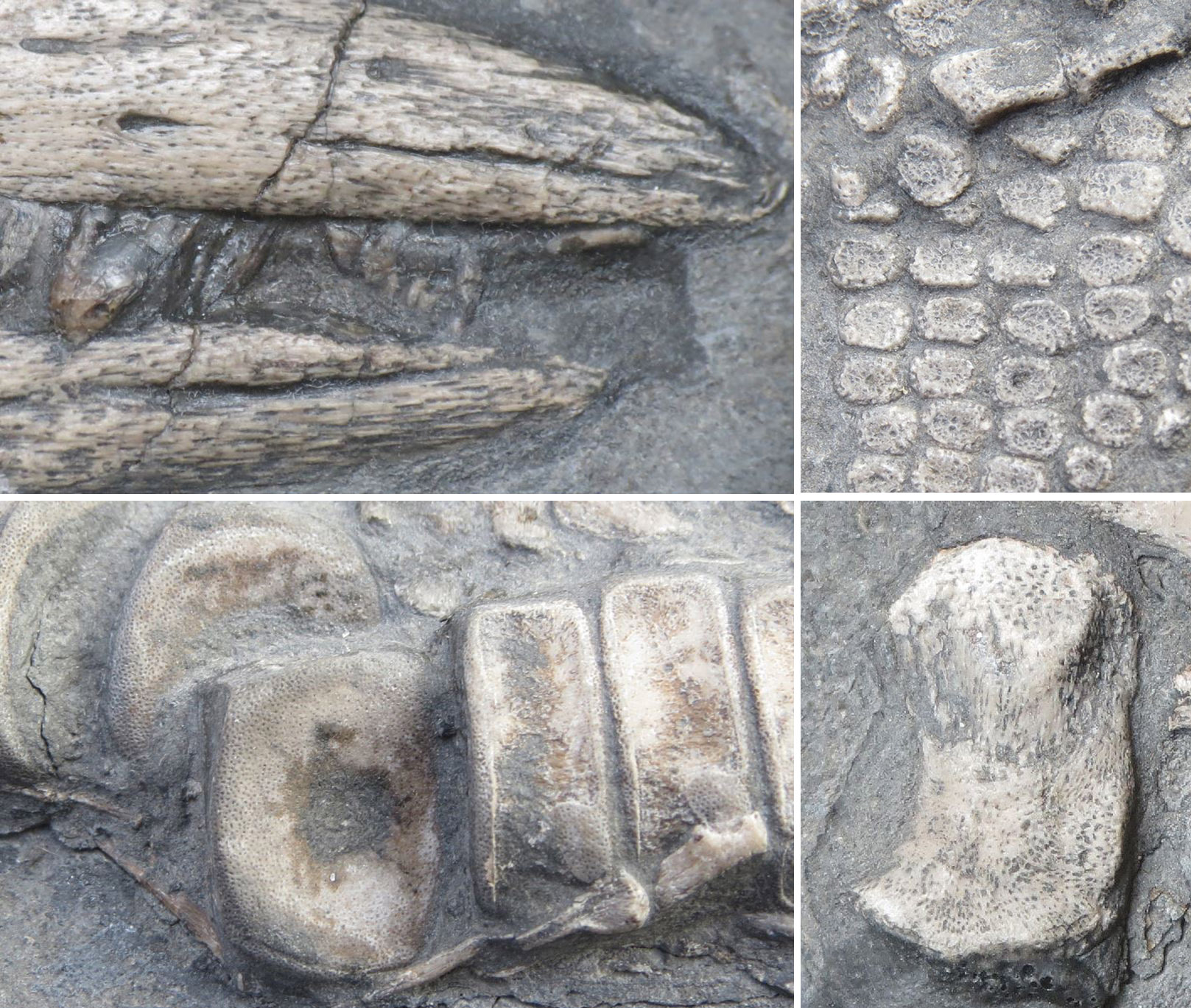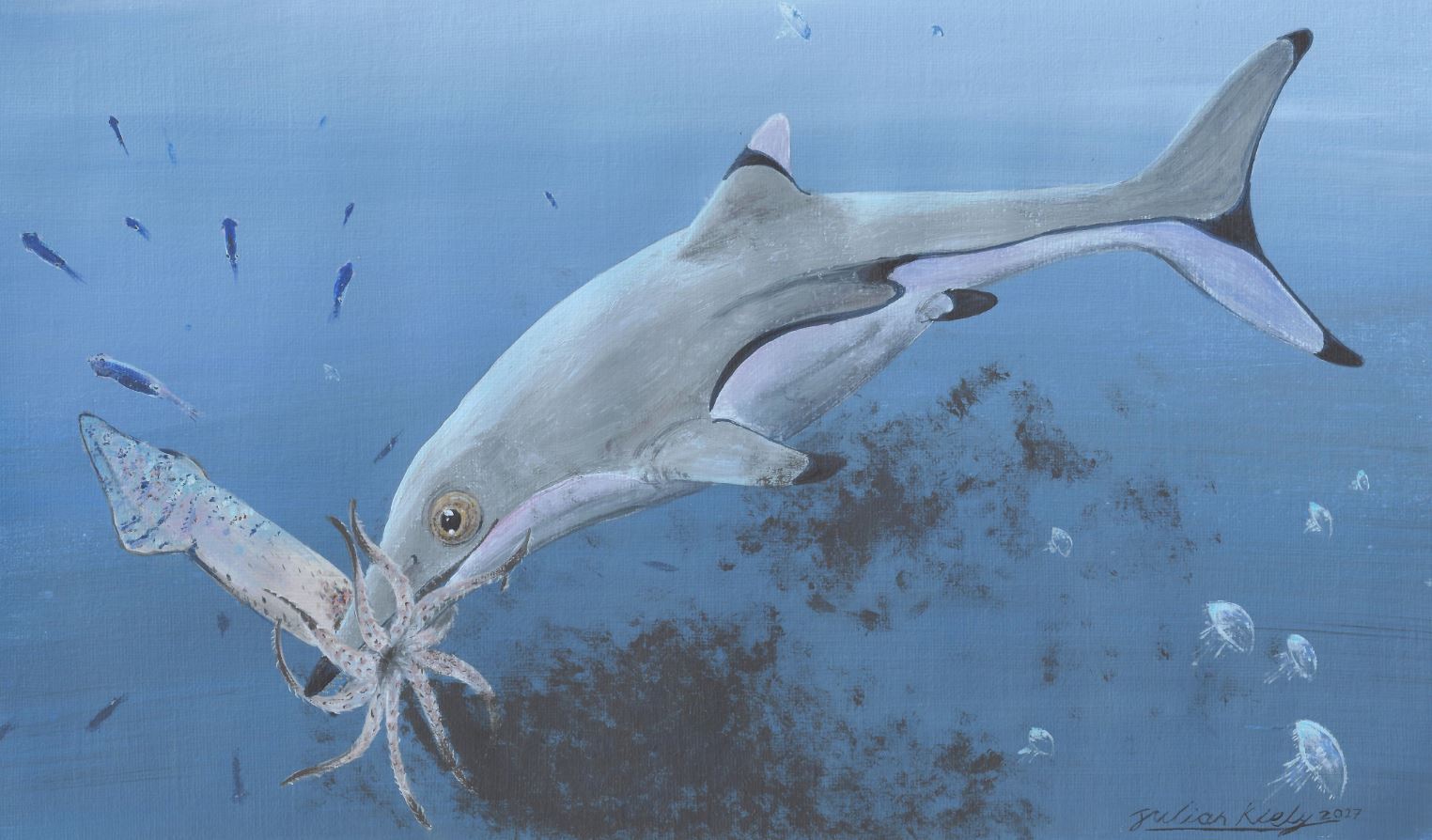The first species of ichthyosaur to be recognised by science was Ichthyosaurus communis, in 1821. This was a major discovery, especially considering that the first dinosaur (Megalosaurus) had yet to be described (in 1824). In fact, the very word, ‘dinosaur’, had not yet been coined. That was not until around 1842, by Sir Richard Owen. Thus, the description of Ichthyosaurus communis was a major turning point in the scientific study of large, extinct reptiles.
As designated in the name, Ichthyosaurus communis, the species was regarded as very common, especially from the Lyme Regis-Charmouth area of Dorset. The Victorian fossil hunter and palaeontologist, Mary Anning, collected several Ichthyosaurus specimens, including some of the first brought to the attention of geologists. A problem, however, occurred with the number of species described. By 1900, over 50 different species were assigned to Ichthyosaurus. This resulted in a huge geographic and stratigraphic range. It was not until later studies re-examined the ichthyosaur fossil record and most species were given new generic names. Today, six species remain in the genus, but the most common is still, you guessed it, Ichthyosaurus communis. But, it is not as common as previously thought. I. communis is almost exclusively known from Dorset, but other isolated occurrences have been recorded from Somerset and Yorkshire.


Of the many Ichthyosaurus specimens, there are in excess of 30 small-bodied examples known, with a body length of less than 1 m. It is surprising that only two of these small specimens have been confidently assigned to a species of Ichthyosaurus: one to I. conybeari and the other to I. anningae. In a new study, working with colleagues (Nigel Larkin, Steve Dey [of ThinkSee3D], Ian Boomer, and Philip Copestake), we have identified the first neonate I. communis. This new specimen has an estimated total length of 70 cm. It is exceptionally well-preserved, missing only the distal portion of the tail.
This new specimen is from the collections of the Lapworth Museum of Geology, University of Birmingham. It has remained unstudied for a number of years. I did, however, examine this specimen briefly in 2013, with a view to publishing it. A University of Birmingham student also studied the specimen in 2014 (discussion with Richard Butler). However, the specimen needed to be conserved before a thorough examination could take place. Last year, palaeontologist and co-author of the new study, Nigel Larkin, was tasked with conserving this specimen. This gave me the opportunity to re-examine the ichthyosaur, including taking measurements, photos, and detailed observations. The skull and skeleton of this small ichthyosaur shared numerous features in common with larger examples of I. communis. There was no doubt in my mind that this was a juvenile I. communis – thus, new to science!

Unfortunately, no details of the specimen’s age or location are known. So, Nigel Larkin, with permission, removed some of the rock from around the skeleton. He passed this on to Ian Boomer (University of Birmingham) and Philip Copestake (Merlin Energy, Resources Ltd) so that they could analyse the rock for microscopic fossils. Based on the types of microfossil preserved, they were able to identify that this ichthyosaur was around 199-196 million years old, from the Early Jurassic (latest Hettangian-earliest Sinemurian). This is important for scientists, considering that this provides new information that otherwise would be lost.
Aside from the size, it is clear that this specimen is of a very young individual. Almost all of the bones are highly cancellous (spongious), which shows that they were poorly ossified. Similar preservation is present in ichthyosaur embryos. We know, however, that our new specimen is not an embryo because it was not found inside an adult. Furthermore, on closer inspection, we also identified several tiny, hook-shaped objects scattered between the ribs. I immediately recognised these as the hooklets from the arms of squid. [My very first scientific paper was describing an Ichthyosaurus with stomach contents.] This is interesting for several reasons, but also because a study by other researchers on a different type of ichthyosaur, called Stenopterygius, which is from a geologically younger age (Early Jurassic, Toarcian), found that the small – and therefore young – examples of that species fed exclusively on fish. This shows a difference in prey-preference in newborn ichthyosaurs.


With this new discovery, it is the hope that other small-bodied Ichthyosaurus specimens can be assigned to a particular species based on detailed, osteological comparisons with adults. Furthermore, hopefully this ‘trial run’ with analysing the matrix of historic specimens might yield new information for other examples.
The perfectly preserved newborn ichthyosaur is now on display at the Lapworth Museum of Geology, University of Birmingham.
The new study was published in the scientific journal, Historical Biology.

References & Further reading
De la Beche, H.T. and Conybeare, W.D. 1821. Notice of the discovery of a new fossil animal, forming a link between the Ichthyosaurus and crocodile, together with general remarks on the osteology of the Ichthyosaurus. Transactions of the Geological Society of London 5: 559–594.
Lomax, D. R. and Tamura, N. 2014. Dinosaurs of the British Isles. Siri Scientific Press, Manchester. pp. 416.
Lomax, D. R. and Massare, J. A. 2015. A new species of Ichthyosaurus from the Lower Jurassic of West Dorset, England. Journal of Vertebrate Paleontology.
Lomax, D.R. and Massare, J.A. 2017. Two new species of Ichthyosaurus from the lowermost Jurassic (Hettangian) of Somerset, England. Papers in Palaeontology 3: 1–20.
Lomax, D. R. and Sachs, S. 2017. On the largest Ichthyosaurus: A new specimen of Ichthyosaurus somersetensis containing an embryo. Acta Palaeontologica Polonica.
Lomax, D. R., Larkin, N. R., Boomer, S., Dey, S. and Copestake, P. 2017. The first known neonate Ichthyosaurus communis skeleton: a rediscovered specimen from the Lower Jurassic, UK. Historical Biology, https://doi.org/10.1080/08912963.2017.1382488.
McGowan, C. and Motani, R. 2003. Handbook of Paleoherpetology, Ichthyopterygia. 175 pp. Verlag Dr Friedrich Pfeil, Munich.
Torrens, H. S. 1995. Mary Anning (1799–1847) of Lyme; ‘the greatest fossilist the world ever knew’. British Journal for the History of Science. 28, 257–284.
 Paleobiology
Paleobiology
Responses